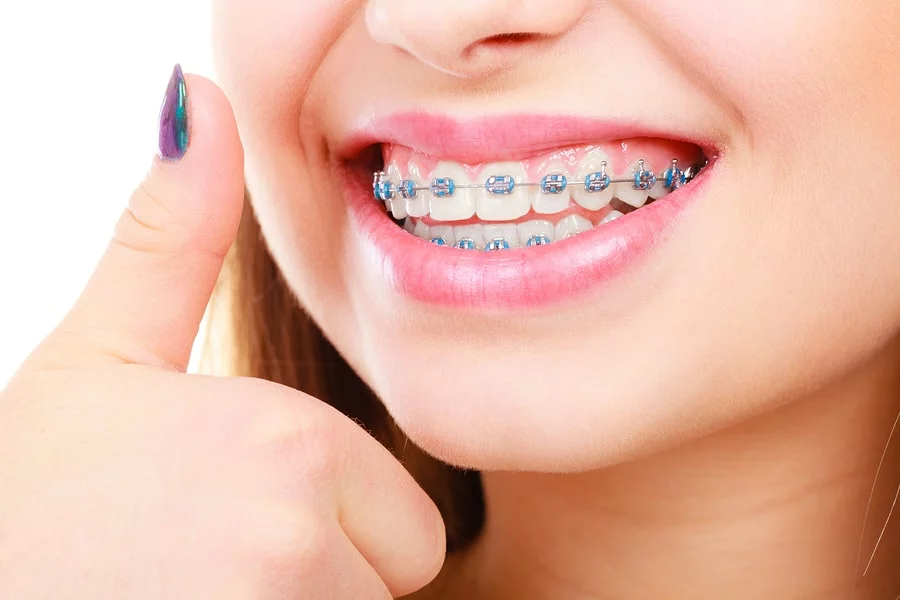Orthodontics is not only about aesthetics but also an important safeguard for oral health. Statistics show that over 60% of the global population has dental alignment issues, with 30% requiring professional intervention. This article will systematically introduce the types of orthodontic treatments, suitable candidates, treatment processes, and care tips to help you make an informed decision and achieve a healthy, confident smile.

I. Why is orthodontic treatment necessary?
1. Impact on Health
- Chewing function: Malocclusion reduces chewing efficiency by 30%, straining the gastrointestinal system.
- Cleaning challenges: Crowded teeth are 3 times more likely to develop cavities than properly aligned ones.
- Joint pressure: Deep overbite may trigger temporomandibular joint disorder (TMD).
2. Aesthetics and Psychology
Research from the American Association of Orthodontists shows straight teeth boost first-impression likability by 47%.
Case in point: A 28-year-old professional reported a 35% higher success rate in salary negotiations after straightening her teeth.
3. Optimal Timing for Treatment
- Childhood (8–12 years): Leverage growth spurts to guide jaw development.
- Adulthood (any age): Technological advances have tripled orthodontic cases among adults over 50.
II. Comparison of Mainstream Orthodontics Techniques
| Type | Features | Ideal For | Treatment Duration | Price Range |
|---|---|---|---|---|
| Metal Braces | Reliable results, cost-effective | Teens, complex cases | 18–24 months | ¥15,000–¥30,000 |
| Ceramic Semi-Invisible | 50% more aesthetic than metal | Professionals | 20–26 months | ¥25,000–¥40,000 |
| Clear Aligners | Removable, nearly invisible | Mild to moderate issues | 12–18 months | ¥30,000–¥60,000 |
| Lingual Braces | Fully hidden, high skill required | Performers, public figures | 24–30 months | ¥60,000–¥100,000 |
Innovative Technologies:
- Accelerated orthodontics: Minimally invasive procedures cut treatment time by 30%.
- AI prediction systems: 3D simulations of treatment progress (accuracy up to 0.1mm).
III. Step-by-Step Treatment Process
1. Initial Consultation (1–2 Weeks)
Essential Exams:
- Panoramic X-rays (evaluate roots and jaw structure).
- Silicone impressions (digital scanning offers greater precision).
- Facial proportion analysis.
2. Treatment Planning
Key Considerations:
- Whether extractions are needed (40% of cases require this).
- Use of anchorage screws (vital for complex tooth movements).
- Expected changes to facial profile.
3. Active Treatment Phase
- Monthly check-ups: Adjustment of force (typically 50–100g per session).
- Emergency Handling:
- Loose brackets: Seek a follow-up within 24 hours.
- Wire irritation: Use orthodontic wax for temporary relief.
4. Retention Phase (Critical!)
- Duration: At least 2 years (full-time wear for the first 6 months).
- Modern Retainers:
- Clear thermoplastic retainers.
- Hawley retainers (adjustable for long-term use).
IV. Essential Care During Treatment
1. Cleaning Tools
- Water flosser: Removes 90% of debris around brackets.
- Interdental brushes: Clean hard-to-reach areas under wires.
- Fluoride mouthwash: Prevents white spots (decalcification).
2. Dietary Guidelines
- Avoid entirely: Rice cakes, nuts, hard candies.
- Consume with caution: Apples (cut into pieces), steak (shredded).
3. Pain Management
- Soreness after adjustments: Warm saltwater rinses ease discomfort for 3 days.
- Emergency relief: Low-level laser therapy (LLLT) reduces inflammation.
Conclusion
Orthodontic treatment is a patient-requiring “tooth relocation” process. By choosing a professional orthodontist (certified by the Orthodontic Specialty Committee of the Chinese Stomatological Association) and following meticulous care instructions, you will not only achieve straight teeth but also make a lifelong investment in your health.
Reference articles:
Understanding Orthodontics: What is an Orthodontist?
Related articles:


